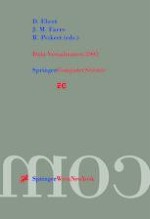2001 | Book
Data Visualization 2001
Proceedings of the Joint Eurographics — IEEE TCVG Symposium on Visualization in Ascona, Switzerland, May 28–30, 2001
Editors: Prof. Dr. David S. Ebert, Dr. Jean M. Favre, Dr. Ronald Peikert
Publisher: Springer Vienna
Book Series : Eurographics
Included in: Professional Book Archive
